Modified to restore lost pics.
Any and all comments are welcomed.
Lock pics of Virginia Rifles (Whisker's Gunsmiths of Virginia - pages 185 and 186) would be much appreciated.
This rifle has been discussed in a recent thread with a focus on the unusual method of attaching the lock, and a secondary discussion on the significance of the "PH" initials on the lock plate. At the time, there were only a few photos and limited second-hand information.
The rifle was identified as being from Unicoi Co., TN and possibly having been repaired by Rudolph Holt in Pikesville TN - if the initials on the lock turned out to be "RH" instead of "PH". One member has mentioned seeing an almost identical rifle in Pikesville, TN at one point. Another member pointed out that two VA-made rifles with locks mounted with wood screws are known to exist (Ref. Whisker's Gunsmiths of Virginia - pages 185 and 186).
Now having the rifle in hand, I have chosen to start a new thread with a more general focus, rather than continue the older thread. Please speak up if I have committed a no-no. This is not intended as a show and tell. My knowledge of Southern rifles is limited and I welcome any and all comments.



The rifle is a .32 cal with a 34 1/8" forged straight bbl measuring anywhere from .763" to .801" along it's length. Since the largest measurement is at the breech and the smallest is at the upper thimble, with the muzzle flaring somewhat, a swamped bbl might be suggested, but it is likely just variation due to forging and filing. The length of pull is 14 1/8".
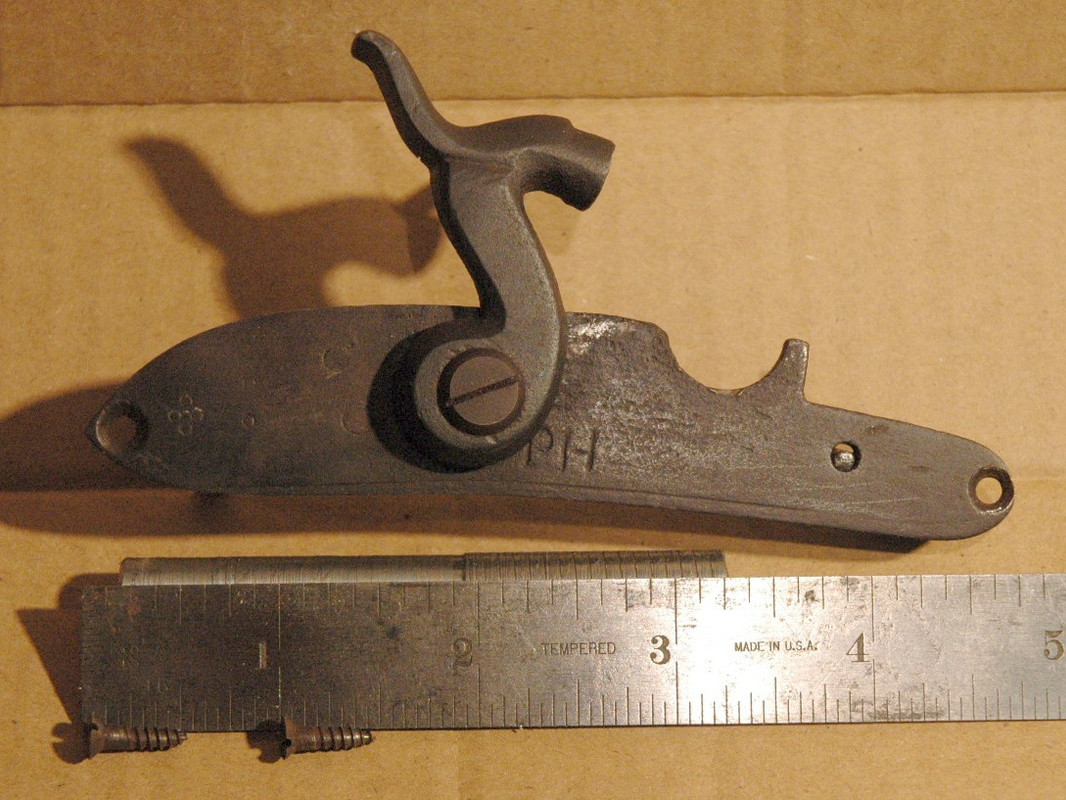
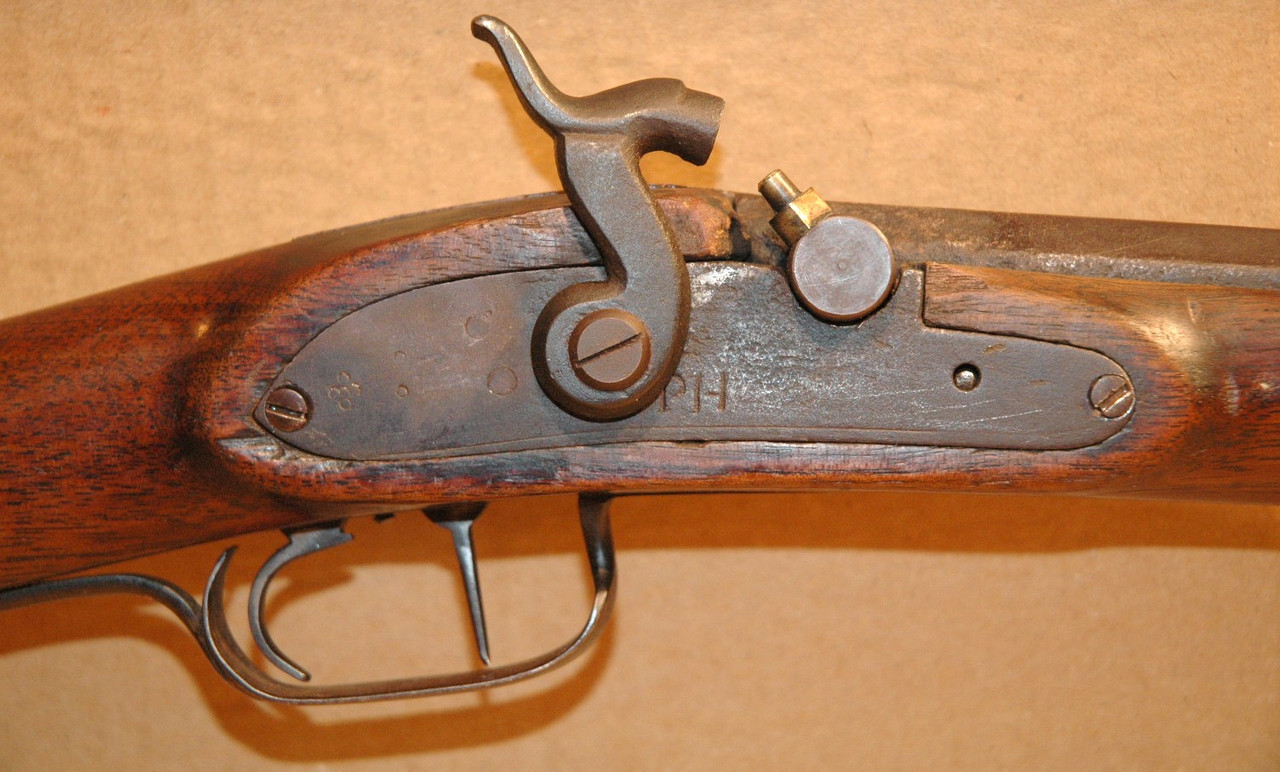
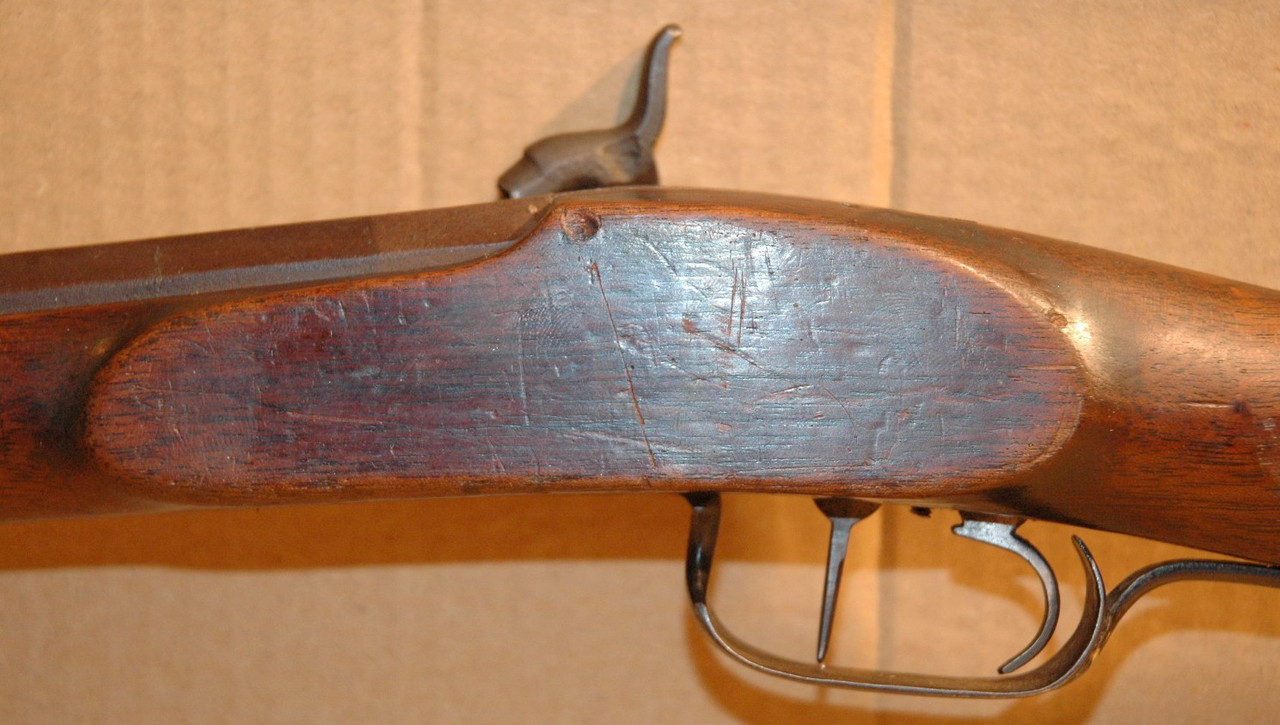
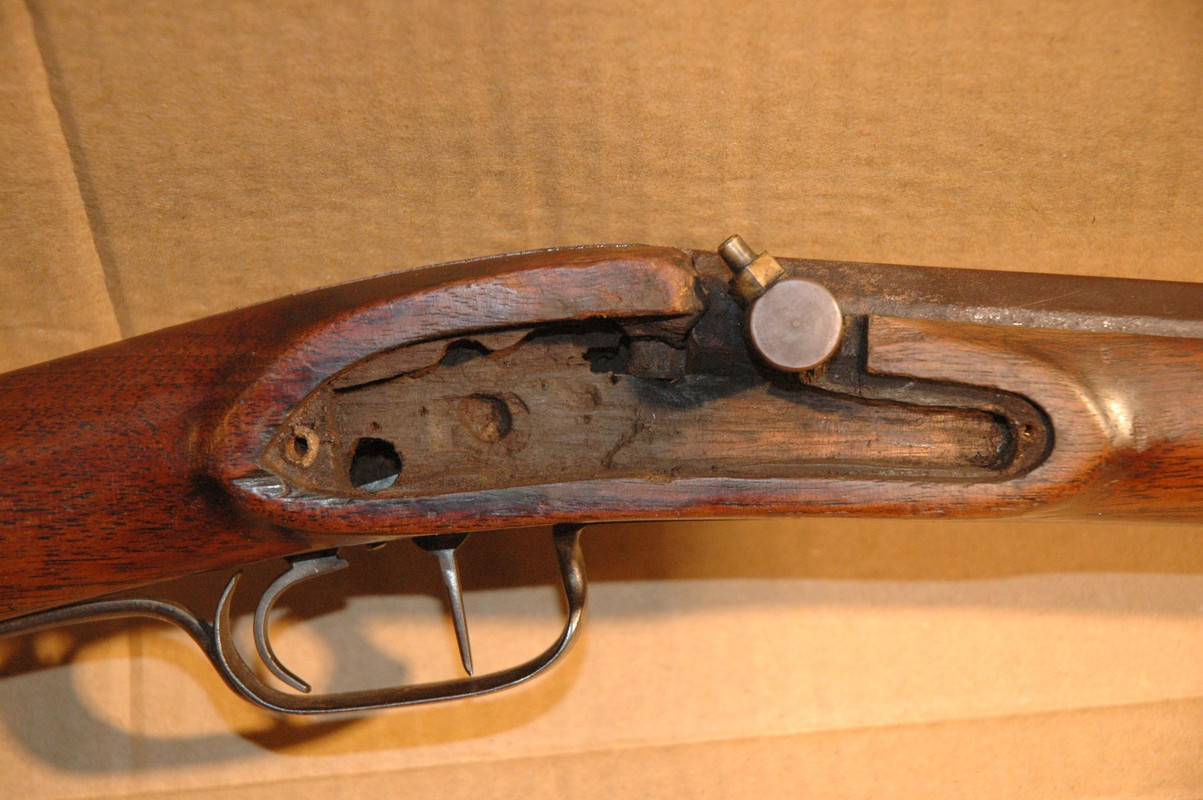
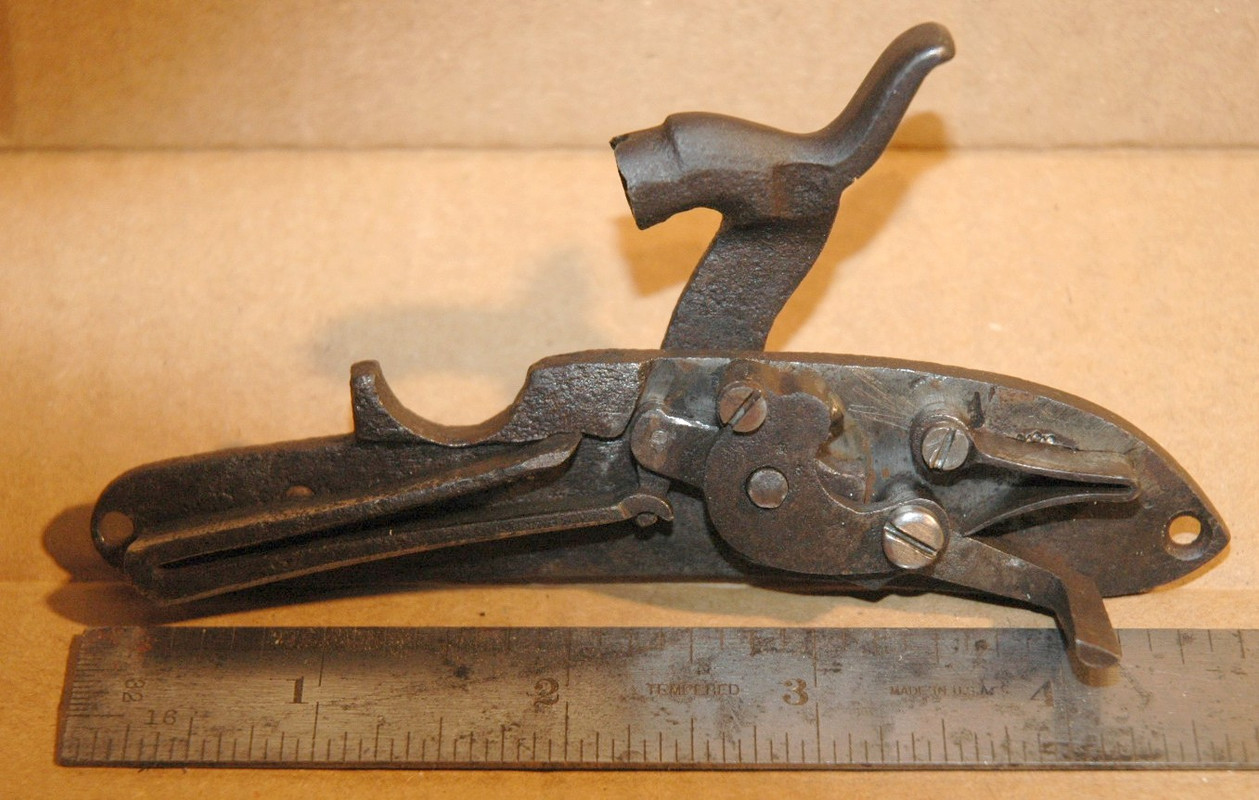
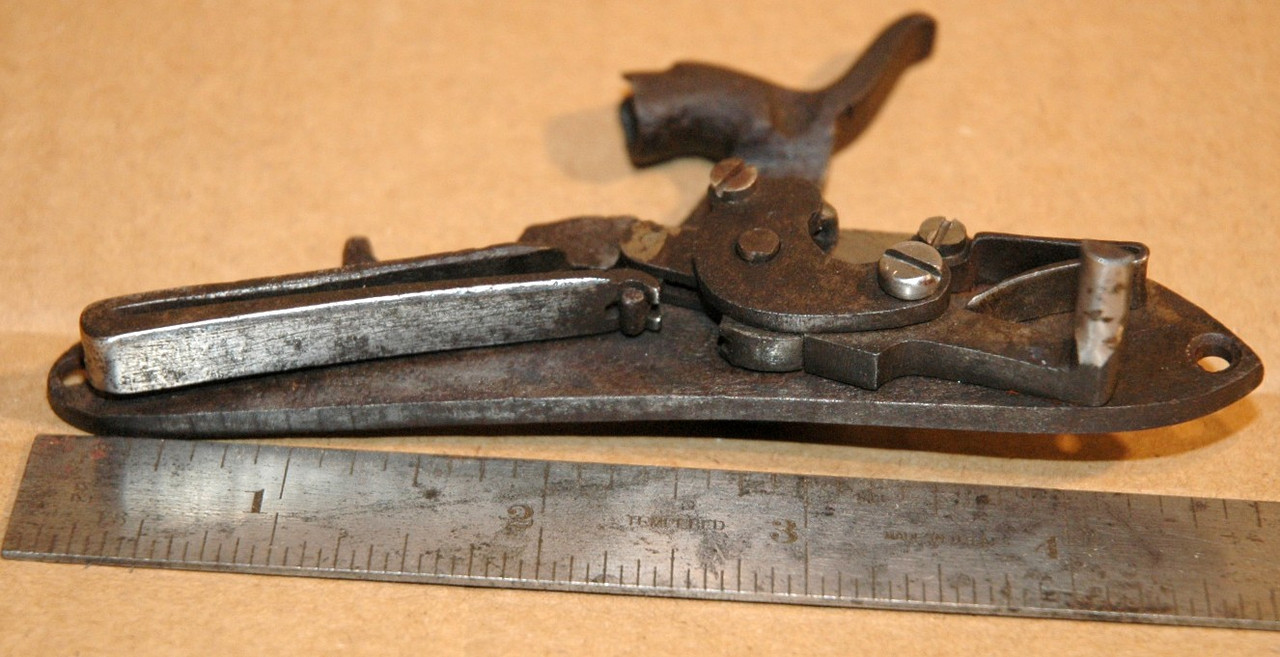
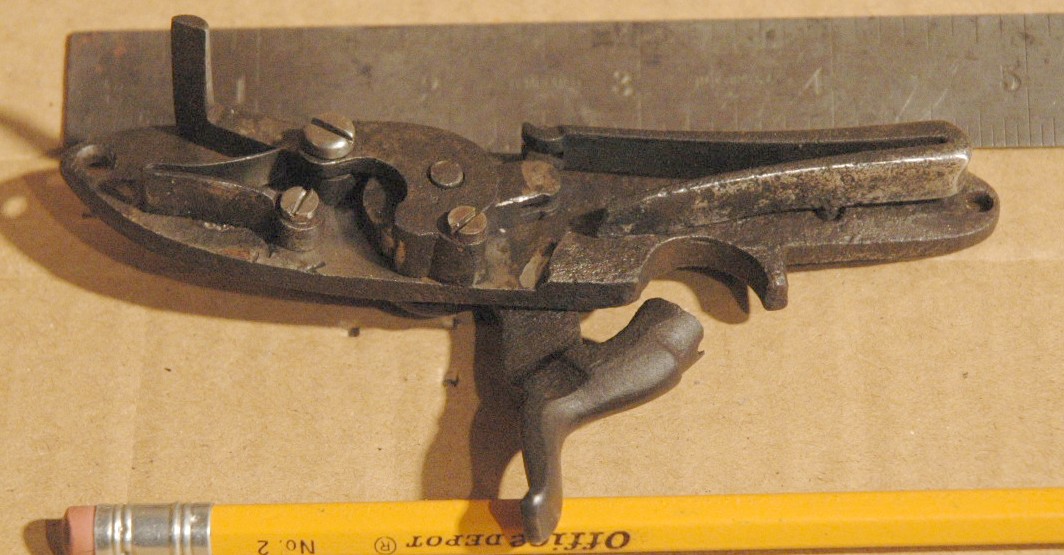
As shown, the rifle was indeed built with the lock held in place by two front mounted, and very small, wood screws. The lock appears to have been hand made and is a very precise fit in the mortise. There is no fly and no half cock notch. There is no evidence of the mortise having been modified for a replacement lock and I am confident the lock is original to the rifle. The initials on the lock are, by all appearance, "PH". The rifle was in use as recently as one month ago, and there is evidence of recent repairs. The two bridle screws and the sear spring screw are likely new replacements and the screw holding the hammer in place is a modern replacement. One can also see where some lock internals have been recently cleaned up. The drum and nipple were also recently replaced and the original drum and nipple remain with the rifle. Luckily, the threads in the bbl were not altered.



The same punch dot decorating theme appears on the bbl in the vicinity of the rear sight, on the lock and at the muzzle. The decoration on the lock ties in with both that found around the rear sight and at the muzzle. The decoration at the muzzle is very difficult to see, but is triangular sets of three dots at the 1:30, 4:30, 7:30 and 10:30 clock-face positions around the muzzle. I would take the commonality of the decoration as further evidence the lock is original to the rifle and strong evidence that the barrel has not been shortened. Please set me straight if you disagree.


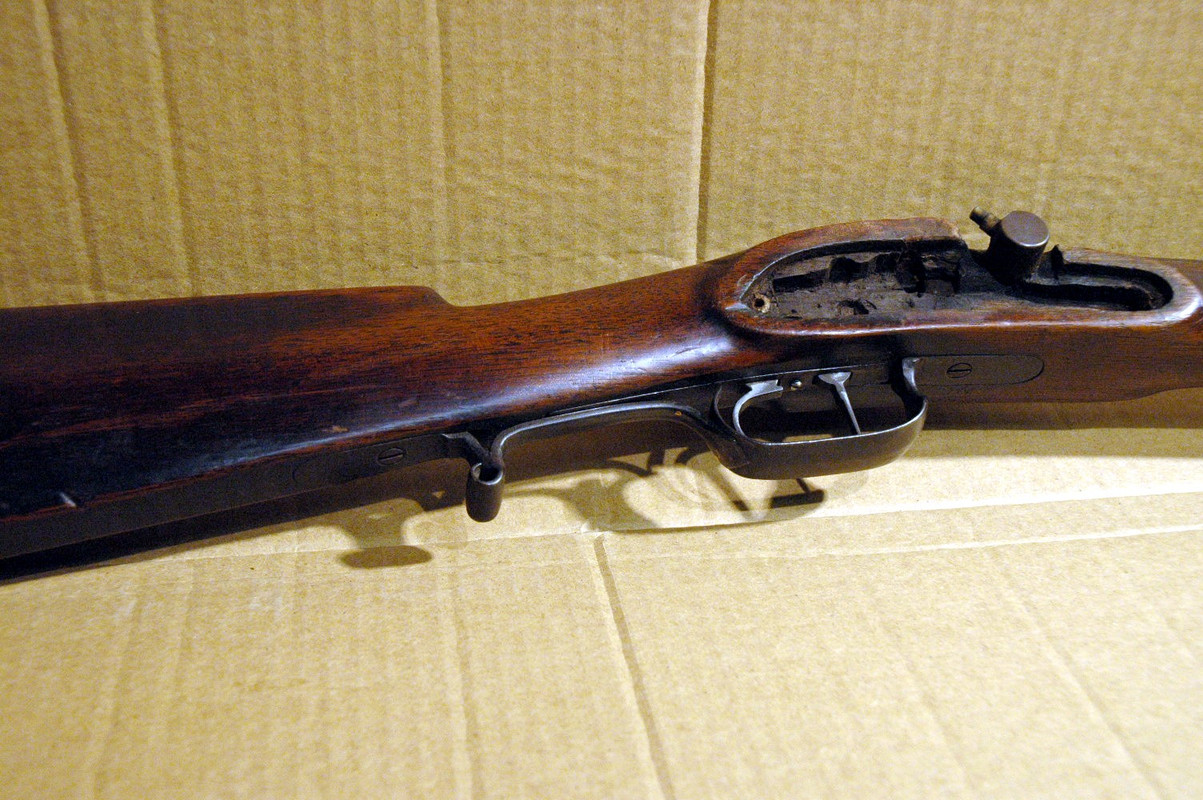

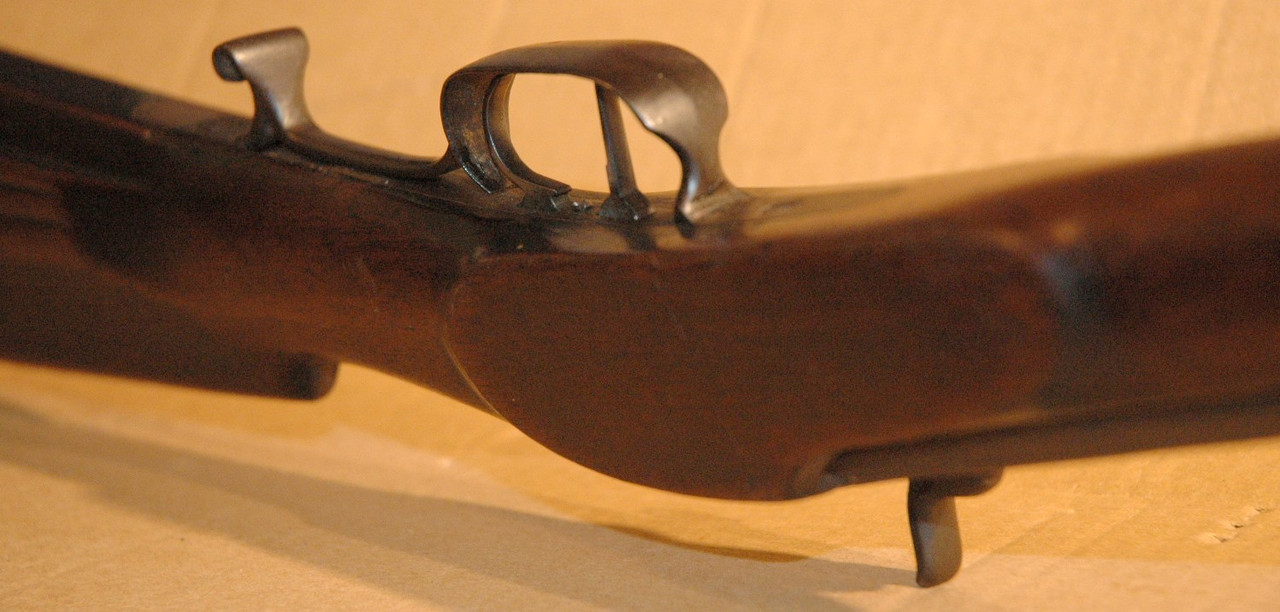

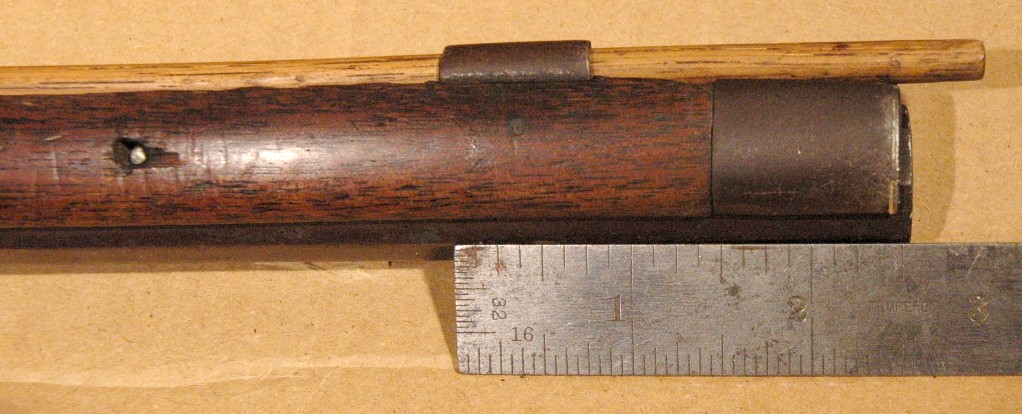

All of the hardware appears to be hand made. The hand made set trigger assembly is a single lever. Interestingly, I cannot determine what is holding the two-piece nose cap in place. The answer may be under the bbl, but I am reluctant to pull the bbl to find out.




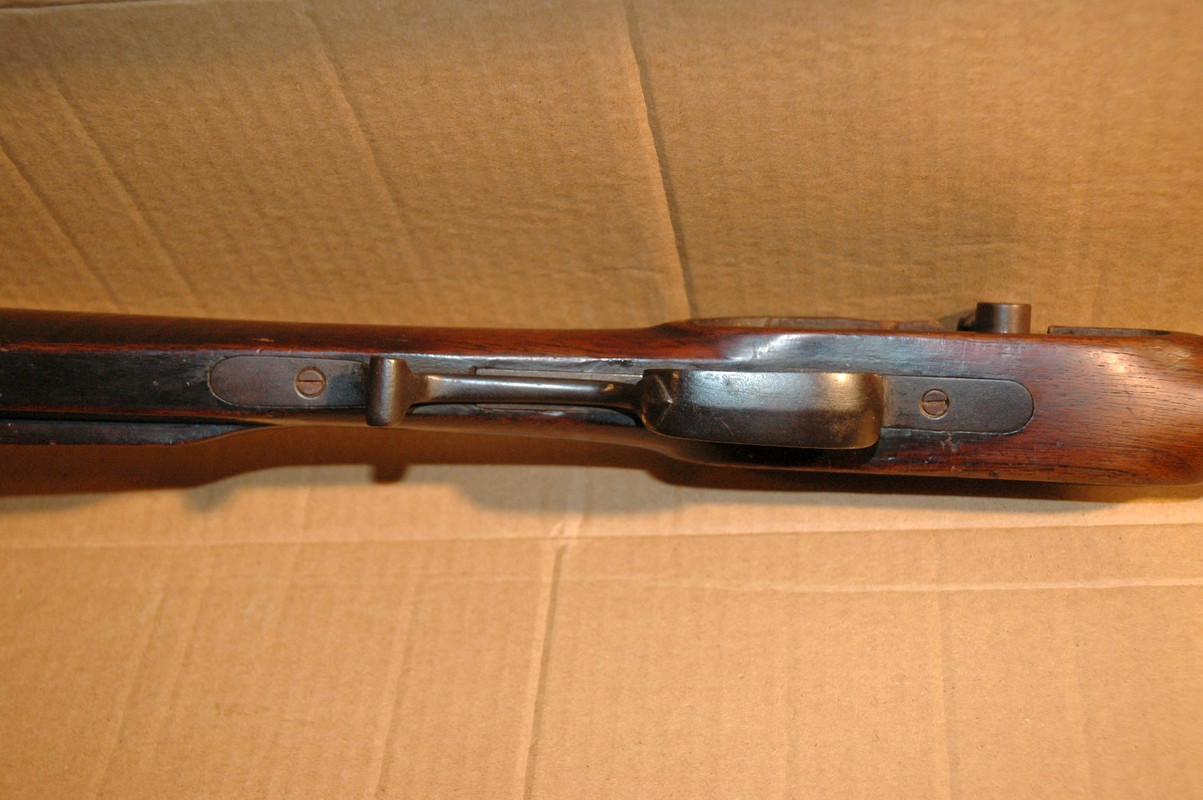
As I understand it, The details shown in this series of photos are what led to the rifle initially being identified as from Unicoi County. Now, if we could just figure out who likely built it. It is interesting how the butt plate and extension are attached. I had thought the extension typically butted into the plate, but this one is just the reverse.
Thank you to all those who commented on the first thread, and a particular thank you to Cades Cove Fiddler and Molly. Please chime in here.

